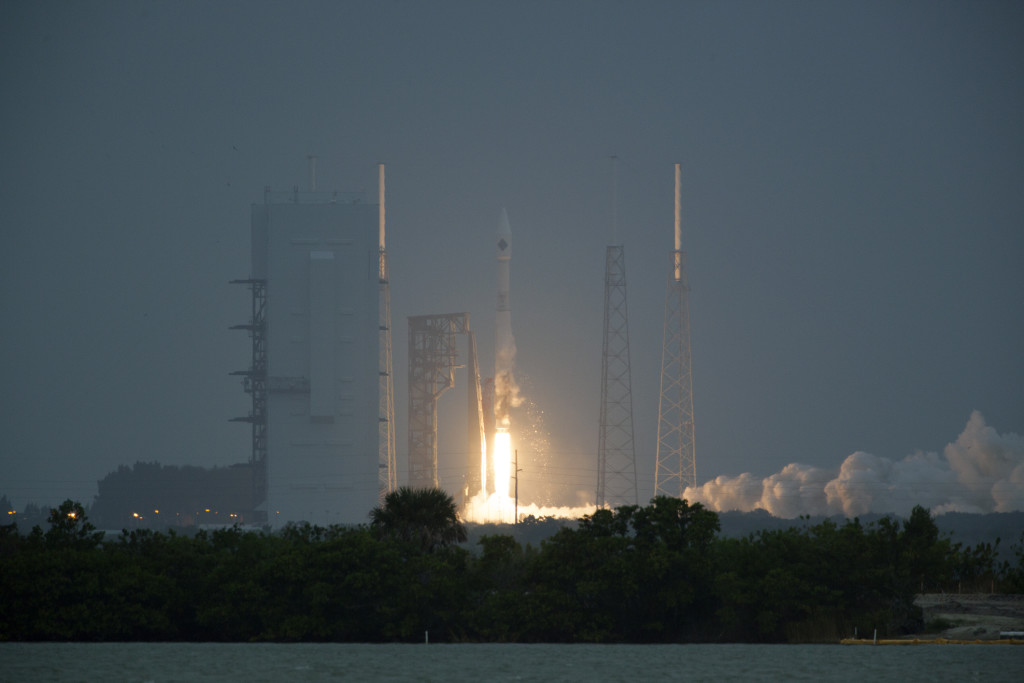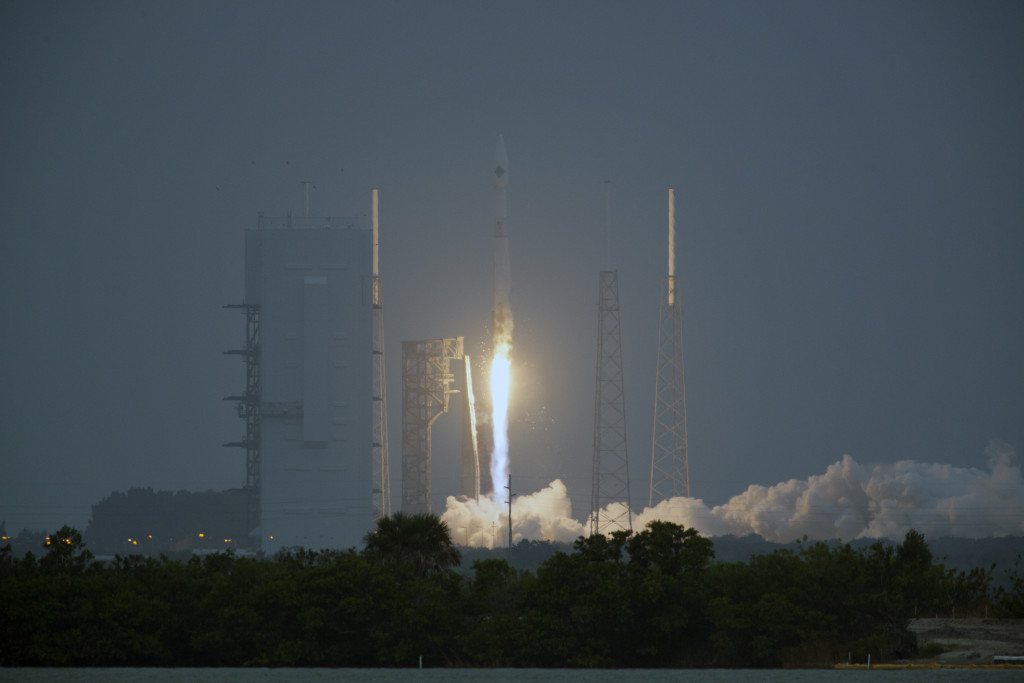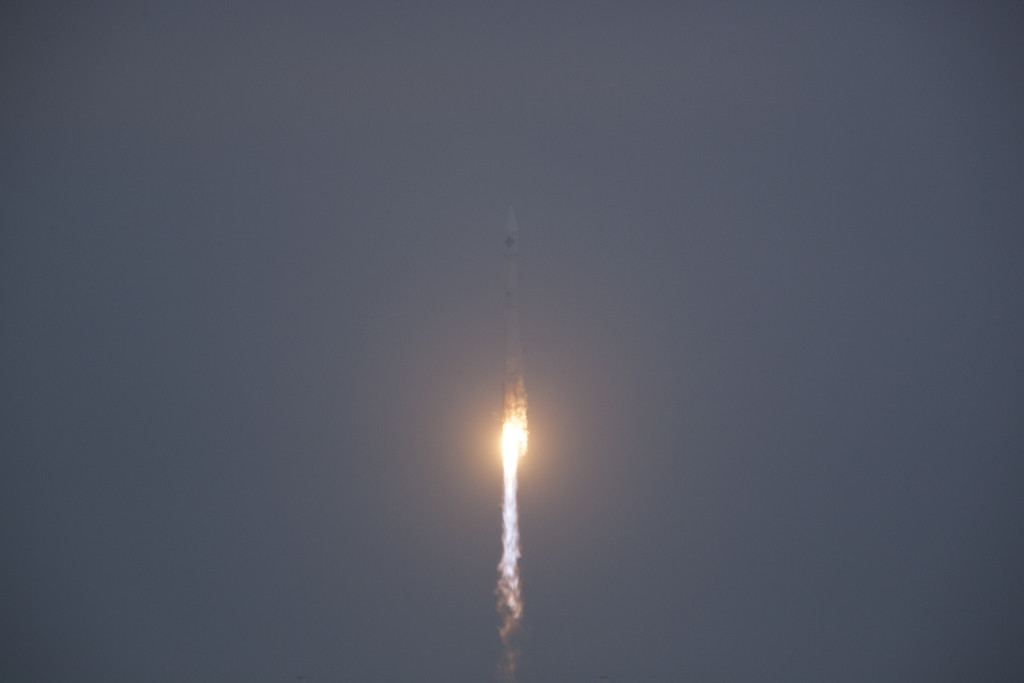

 Here are a few launch photos from earlier today. You can see more at flickr.com/NASAKennedy. Photos by NASA/Kim Shiflett
Here are a few launch photos from earlier today. You can see more at flickr.com/NASAKennedy. Photos by NASA/Kim Shiflett


 Here are a few launch photos from earlier today. You can see more at flickr.com/NASAKennedy. Photos by NASA/Kim Shiflett
Here are a few launch photos from earlier today. You can see more at flickr.com/NASAKennedy. Photos by NASA/Kim Shiflett
 “We had a perfect orbit injection, really right on the money,” said Orbital ATK’s Frank DeMauro, manager of Cargo Resupply for the company, seen on the right in this image from NASA TV’s launch coverage with Mike Curie, launch commentator. “Everything’s looking great. The power system’s healthy, the propulsion system is healthy, we’re flying a good spacecraft.”
“We had a perfect orbit injection, really right on the money,” said Orbital ATK’s Frank DeMauro, manager of Cargo Resupply for the company, seen on the right in this image from NASA TV’s launch coverage with Mike Curie, launch commentator. “Everything’s looking great. The power system’s healthy, the propulsion system is healthy, we’re flying a good spacecraft.”
A United Launch Alliance lifted the Cygnus into space, the first time that combination has been used for a cargo resupply mission to the International Space Station.
“It was good to see the rocket head up there and put us exactly on target,” DeMauro said. “Most importantly the folks we’re really serving are the crew on the space station. We are thrilled we could serve them this way it’s been a great day and we look forward to more great days in the future.”
Wednesday will be the berthing day for Orbital ATK’s Cygnus following today’s flawless liftoff from Cape Canaveral Air Force Station aboard a United Launch Alliance Atlas V rocket. With its solar arrays deployed for power production, the Cygnus will fly autonomously to catch up to the station as ground controllers maintain a close watch from Earth. Cygnus, loaded with 7,380 pounds of equipment and supplies, will move to within reach of the 57-foot-long space station arm. Astronauts operating the arm will grapple the Cygnus and connect it to the Earth-facing port on the Unity module so it can be unpacked and the gear inside put to use.
Ground controllers received confirmation that the first of Cygnus’ two solar arrays deployed as planned.
 Astronaut Scott Kelly tweeted this photo from the International Space Station of the plume of the United Launch Alliance Atlas V rocket as it soared into orbit carrying the Orbital ATK Cygnus spacecraft. Kelly will be among the crew to berth the Cygnus to the station on Wednesday and unpack its 7,383 pounds of gear including elements for dozens of science experiments on the orbiting laboratory. You can follow Kelly on Twitter where his handle is @StationCDRKelly
Astronaut Scott Kelly tweeted this photo from the International Space Station of the plume of the United Launch Alliance Atlas V rocket as it soared into orbit carrying the Orbital ATK Cygnus spacecraft. Kelly will be among the crew to berth the Cygnus to the station on Wednesday and unpack its 7,383 pounds of gear including elements for dozens of science experiments on the orbiting laboratory. You can follow Kelly on Twitter where his handle is @StationCDRKelly
The Cygnus’ twin solar arrays have begun deploying. The orbital ATK team is watching over the deployment using telemetry sent down from the spacecraft’s systems.
The Orbital ATK control team will begin to deploy the twin solar arrays of the Cygnus spacecraft in about two minutes. They will first extend the array arms away from the spacecraft so they can unfurl into their circular shapes. The whole process will take about 30 minutes.